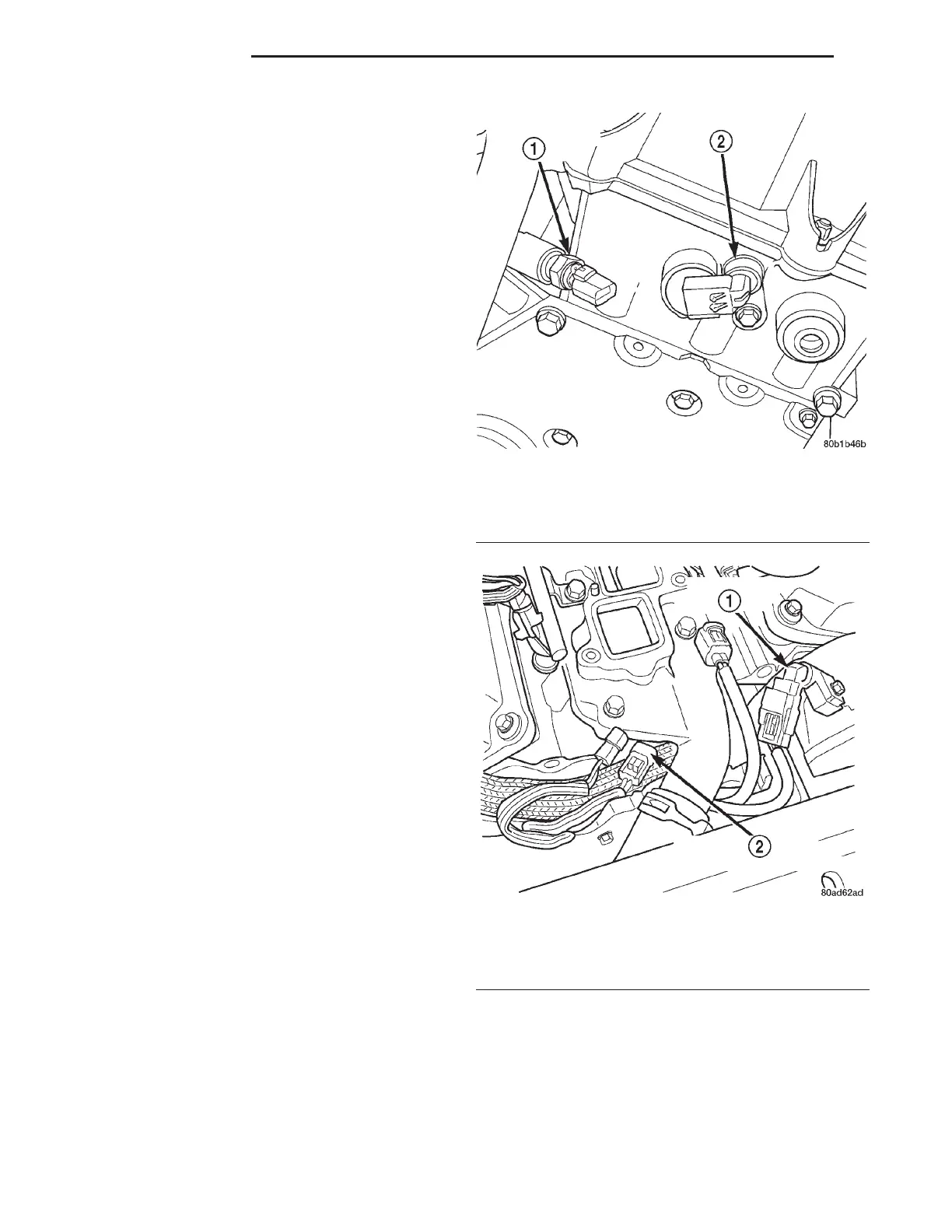tests are explained in detail in the On-Board Diag-
nostic Student Reference Book.
BATTERY VOLTAGE—PCM INPUT
DESCRIPTION
The direct battery feed to the PCM is used as a
reference point to sense battery voltage.
OPERATION
In order for the PCM to operate, it must be sup-
plied with battery voltage and ground. The PCM
monitors the direct battery feed input to determine
battery charging rate and to control the injector ini-
tial opening point. It also has back-up RAM memory
used to store Diagnostic Trouble Codes (supply work-
ing DTCs). Direct battery feed is also used to perform
key-OFF diagnostics and to supply working voltage
to the controller for OBDII.
If battery voltage is low the PCM will increase
injector pulse width (period of time that the injector
is energized).
Effect on Fuel Injectors
Fuel injectors are rated for operation at a specific
voltage. If the voltage increases, the plunger will
open faster and conversely, if voltage is low the injec-
tor will be slow to open. Therefore, if sensed battery
voltage drops, the PCM increases injector pulse-
width to maintain the same volume of fuel through
the injector.
Charging
The PCM uses sensed battery voltage to verify that
target charging voltage (determined by Battery Tem-
perature Sensor) is being reached. To maintain the
target charging voltage, the PCM will full field the
generator to 0.5 volt above target then turn OFF to
0.5 volt below target. This will continue to occur up
to a 100 Hz frequency, 100 times per second.
ENGINE COOLANT TEMPERATURE SENSOR—
PCM INPUT
DESCRIPTION
The engine coolant temperature sensor threads
into the coolant system (Fig. 2) or (Fig. 3).
OPERATION
The sensor provides an input to the Powertrain
Control Module (PCM). As coolant temperature var-
ies, the sensor resistance changes, resulting in a dif-
ferent input voltage to the PCM.
When the engine is cold, the PCM will demand
slightly richer air-fuel mixtures and higher idle
speeds until normal operating temperatures are
reached.
The engine coolant sensor input also determines
operation of the low and high speed cooling fans.
Fig. 2 Engine Coolant Temperature Sensor—2.7L
Engine
1 – ENGINE COOLANT TEMPERATURE SENSOR
2 – CAM SENSOR
Fig. 3 Engine Coolant Temperature Sensor—3.2/3.5L
Engine
1 – CAMSHAFT SENSOR
2 – ENGINE COOLANT TEMPERATURE SENSOR
14 - 28 FUEL SYSTEM LH
DESCRIPTION AND OPERATION (Continued)

